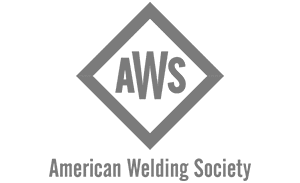Sanitary PD Pumps & Eliminating Slip: A Case Study
A few months back we looked at the various clearance options available on a Waukesha Cherry-Burrell Universal 1, 2, & 3 PD Pump. In this post we are going to look at a specific sanitary pump application that we recently ran into with a customer in the field and the impact rotor clearance played in pump performance.

Is your pump slipping?
The volumetric efficiency of a pump is dependent on the fluid slip, which often occurs in a pump. Slip is affected by internal clearances of the parts, temperature, pressure, and viscosity. In a sanitary ECP pump, slip increases directly with pressure and clearance, and inversely with viscosity. The major effect of slip on ECP pump performance is the loss in flow capacity. The expanding cavity on the inlet side of the pump creates a low-pressure area that sucks fluid in to equalize the pressure. This cavity can be filled with fluid from the inlet line in normal performance. However, if the slip is high, the cavity can be partly filled with fluid flowing back through the pump from the outlet side.
Recently, we had a customer who wanted to use an existing pump at one of their sister facilities. Their target flow rate was limited to about .2 gpm due to their high downstream pressure requirement and a fluid viscosity of over 40,000 cps. We took their application data and sized them up for a U2 Model 006 pump. Now that the pump was appropriately sizes, the customer was all set to get their new pump and they ordered a Holland Universal Pump assembly complete with a VFD. Upon installation to their line they quickly ran into a problem—the pump was simply not delivering the expected flow.
With less than a 40% volumetric efficiency, the customer could not generate more flow no matter how fast the pump was run. Applying more pressure to the inlet side of the pump to ensure the pump was primed did not help. Was the downstream pressure condition much higher than expected? Without a pressure gauge anywhere downstream of the pump it was impossible to tell.
Maybe the fluid viscosity has become a factor? Could it have been higher? With a higher viscosity then maybe there is more energy loss than expected.
With some guidance from Holland, the customer ran a test of the pump with a straight horizontal hose with an equivalent total run length of their existing set up. The flow rate remained insufficient even at a full 60 Hz from the VFD. Next, the customer removed the pump and fed a bucket just downstream of the feed tank with the help of some backpressure. Their fluid was now flowing at what appeared to be almost 3 gpm! It was clear their issue could not have been a feed issue.
Videos of each of the two tests were sent in to Holland and it was clear that the pump was not delivering the required flow, but what stood out was how easily the fluid was pouring out from the tank. Perhaps their fluid behaves like a pseudoplastic; a non-Newtonian fluid where the viscosity decreases with an increasing shear rate. We also knew that the pump was outfitted with Hot Clearance rotors due to the customer’s CIP requirements. Perhaps the combination of the low viscosity and/or the Hot Clearance rotors was causing a high slip. So a pair of Standard Clearance rotors were sent for the customer to test out and just like that, the performance was instantly increased and the customer saw positive results.
While it is difficult for most end-users to predict and/or measure viscosity characteristics of their fluids under different flow conditions, today’s case study can serve as an important reminder of the various factors that can impact pump performance. The next time you are having trouble with your pump performance or need help with sizing a new pump for your application then feel free to give us a call or contact us via our website






